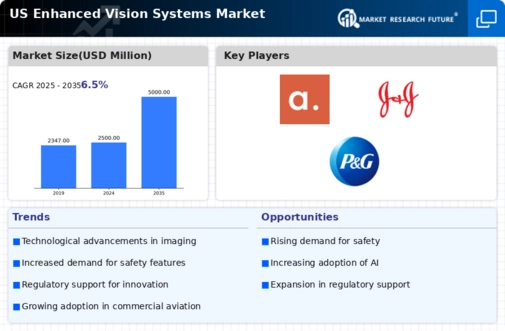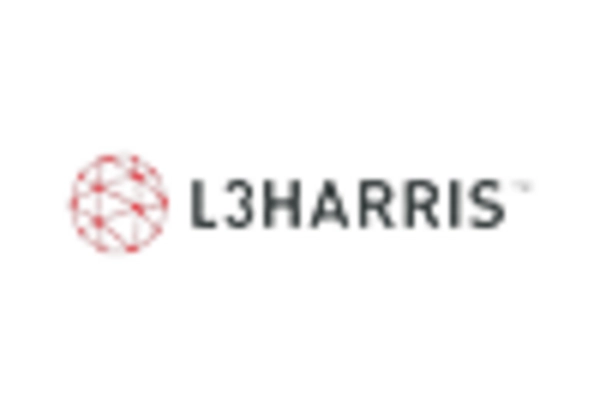Rising Investment in R&D
Investment in research and development (R&D) is a critical driver for the enhanced vision-systems market. Companies are allocating substantial resources to innovate and develop advanced vision technologies that meet the evolving needs of various industries. In 2025, R&D spending in the technology sector is expected to exceed $200 billion, with a significant portion directed towards enhancing vision systems. This investment fosters the creation of cutting-edge solutions, such as high-resolution imaging and real-time data processing capabilities. As organizations strive to maintain a competitive edge, the emphasis on R&D is likely to propel advancements in the enhanced vision-systems market, leading to improved product offerings and increased market share.
Expansion of Smart City Initiatives
The expansion of smart city initiatives across the United States is driving demand for enhanced vision-systems market solutions. As urban areas increasingly adopt smart technologies to improve infrastructure and public safety, the need for advanced vision systems becomes paramount. These systems are employed in traffic management, surveillance, and environmental monitoring, contributing to the overall efficiency of urban operations. According to recent estimates, investments in smart city projects are projected to reach $1 trillion by 2025, creating a substantial market opportunity for enhanced vision systems. This trend suggests that as cities evolve into smart ecosystems, the enhanced vision-systems market will likely experience significant growth.
Growing Adoption of AI Technologies
The enhanced vision-systems market is experiencing a notable surge due to the growing adoption of artificial intelligence (AI) technologies. AI integration enhances the capabilities of vision systems, enabling them to process and analyze visual data with unprecedented accuracy. This trend is particularly evident in sectors such as automotive and healthcare, where AI-driven vision systems are utilized for applications like autonomous driving and medical imaging. The market for AI in vision systems is projected to reach approximately $10 billion by 2026, which indicates a robust growth trajectory. As organizations increasingly recognize the potential of AI to improve operational efficiency and decision-making, the enhanced vision-systems market is likely to benefit significantly from this technological evolution.
Increased Focus on Safety and Security
The heightened focus on safety and security in various sectors is a driving force behind the enhanced vision-systems market. Organizations are increasingly investing in advanced surveillance and monitoring systems to mitigate risks and ensure compliance with safety regulations. This trend is particularly pronounced in industries such as transportation, manufacturing, and public services, where the need for real-time monitoring is critical. The market for security and surveillance systems is anticipated to grow at a CAGR of 10% through 2026, which reflects the increasing demand for enhanced vision technologies. As safety concerns continue to rise, the enhanced vision-systems market is likely to see sustained growth driven by the need for reliable and effective security solutions.
Integration of IoT with Vision Systems
The integration of Internet of Things (IoT) technology with vision systems is emerging as a significant driver for the enhanced vision-systems market. IoT-enabled devices facilitate seamless connectivity and data sharing, allowing vision systems to operate more efficiently and effectively. This integration enhances capabilities such as remote monitoring, predictive maintenance, and data analytics, which are crucial for industries like manufacturing and logistics. The IoT market is projected to grow to $1.1 trillion by 2026, with a substantial portion attributed to applications involving enhanced vision systems. As organizations increasingly adopt IoT solutions, the enhanced vision-systems market is likely to benefit from this convergence, leading to innovative applications and improved operational outcomes.
















Leave a Comment